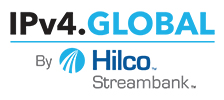
The demand for IPv4 addresses (addresses that allow devices to communicate on the internet) has reached an all-time high. Universities across the country including Penn State, MIT and Harvard and many others are selling large blocks of IPv4 addresses that they do not need (ie. are not using) for millions of dollars.
Yet, most institutions are not yet aware of the amount of unused IPv4 they have, and how much capital they could gain to help support growth initiatives. This article will break down how schools and universities can start selling IPv4 addresses that they aren’t using in a way that maximizes value and eliminates roadblocks in the complex trading process.
The scarcity of IPv4 addresses is driving up their value as demand continues to rise. The Internet Assigned Numbers Authority (IANA) has run out of new IPv4 addresses to allocate, making it more difficult for organizations to obtain new IPv4s for their devices. This has resulted in a high demand for the limited supply these addresses, driving up their value in the marketplace.
Recent data collected by IPv4.Global shows:
With the increased demand for IPv4 addresses, schools and universities sitting on unused IPv4 have a valuable opportunity to generate funds for their campuses. Selling IPv4 can seem daunting, but it doesn’t have to be. Here’s a step-by-step guide for how to sell unused IPv4:
When it comes to selling IP, it’s always in an institution’s best interest to work with a trusted IPv4 broker like IPv4.Global.
IPv4.Global is currently helping schools and universities across the country by guiding them through the process in a way that helps them identify the value of unused IPv4 addresses they’re sitting on and using their expertise to get them the best possible prices.
The internet’s device-identification and location system dates from 1973, with the creation of the first version. However, it wasn’t until the development of Internet Protocol version Four (IPv4) by ARPA in 1981 that the system gained widespread use. IPv4 offers approximately 4.3 billion possible unique identifying number configurations, which was considered more than sufficient at the time.
But as the number of connected devices and services has grown exponentially, the system has faced exhaustion. To manage the numbering convention, the Internet Assigned Numbers Authority (IANA) became the central authority, coordinating IP addressing and domain name management. In 2011, IANA distributed its last IPv4 addresses to the five Regional Internet Registries (RIRs).
IPv4 exhaustion refers to the moment when the Internet Assigned Numbers Authority (IANA) ran out of available IPv4 addresses, which could be assigned to Regional Internet Registries (RIRs) and then to connected devices worldwide. This depletion inevitably filtered down to the regional distributors of addresses, the RIRs mentioned above. They are:
All four ran out of their respective supplies of available IP addresses in subsequent years.
As a result, the low supply of IPv4 addresses has driven up prices to unprecedented levels. This scarcity has become one of the most significant factors impacting global connectivity, leading to waiting lists and extended wait times for IP address allocation.
IPv4.Global offers exclusive benefits for members of E&I Cooperative Services.
E&I provides these institutions with a wide range of cost-saving solutions and services, including contract negotiation, procurement, and supply chain management. They also provide members with:

Hilco is a market-leading broker for purchases and sales of IPv4 addresses worldwide. Through the Hilco Streambank contract, E&I members generate revenue through sales of IPv4 address blocks and purchase what they need.